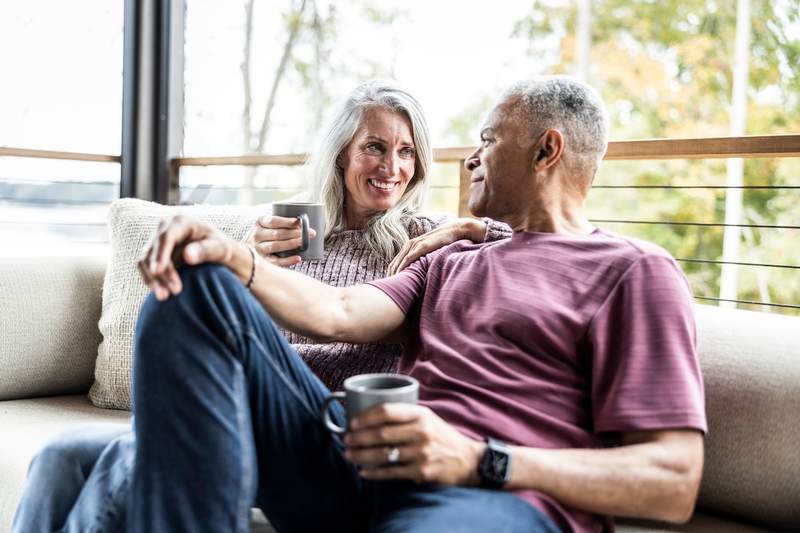Picture this: You come home after a week of vacation in the summer to find your water heater is leaking. A rotting smell greets you as you open the door, indicating a newly flourishing mold growth near the leak. One problem has spawned another: You need to fix the leak and get rid of the mold.
Your homeowners insurance may cover certain types of water damage that lead to mold, but it doesn’t always cover mold itself. The coverage for mold depends on the type of water damage that caused it and whether that type of water damage is a covered peril under your homeowners insurance policy. Here’s how to tell if your homeowners insurance policy covers mold and how to file a successful claim.
When Does Homeowners Insurance Cover Mold?
Fortunately, there are numerous instances where your homeowners insurance policy will cover mold, mainly when the source of the mold is from an unpredictable circumstance or a covered peril. Here’s a list of covered circumstances:
- Mold caused by a burst pipe, drain hose or water heater
- Mold caused by a malfunctioning appliance
- Mold caused by a firefighter using water to extinguish a fire in your home
- Mold caused by toilet overflow
See What You Qualify For
Buy A Home
Discover mortgage options that fit your unique financial needs.

Refinance
Refinance your mortgage to have more money for what matters.
Tap Into Equity
Use your home’s equity and unlock cash to achieve your goals.
When Is Mold Not Covered By Home Insurance?
Here are the circumstances when your insurance company won’t cover mold. Remember, a separate flood insurance policy can bolster your coverage for water damage and mold.
- Mold caused by a roof leak or dripping pipe that you’ve ignored for years
- Mold in a basement that has no dehumidifier, especially in humid climates
- Mold caused by flooding from a storm
How To File A Homeowners Insurance Claim For Mold Damage
Finding mold in your home can be disconcerting because of the potential health ramifications and damage to your home. If you discover mold, here’s how to file a homeowners insurance claim and get help for the removal and repairs.
1. Document The Damage
Before you start the process of filing a homeowners insurance claim for mold damage, it’s essential to document the extent of the damage thoroughly. This documentation will serve as evidence for your claim and help ensure a smoother claims process.
It’s advisable to take photos and videos to capture clear images and evidence of the mold-affected areas in your home. Ensure that the damage is well-lit and visible in the images. In addition, record the dates when you first noticed the mold, when you took the documentation and any other relevant dates, such as when the damage occurred or when you reported it. Then, make a list of damaged items, including furniture, personal belongings or structural components.
2. Contact Your Provider
After documenting the damage, the next step is communicating with your homeowners insurance provider. First, review your policy to familiarize yourself with your policy number and the coverage and exclusions related to mold damage. Once you do so, contact your insurance company immediately to report the mold damage. You’ll submit the date of the damage and provide brief descriptions of the incident and the extent of the mold growth.
Remember, most insurance companies have a dedicated claims department with a phone number or online portal for reporting claims. When providing information, it’s best to share the photos, videos and other documentation you’ve gathered to support your claim. Be clear and concise when explaining the situation. However, it’s crucial not to guess the cause for the mold (unless it’s self-evident, such as a leaky appliance). Instead, the insurance company’s claims adjuster examines the moldy area to determine the cause.
3. Have A Claims Adjuster Inspect The Mold
After receiving information from you, your insurance company will assign a claims adjuster to evaluate the mold damage. The adjuster will schedule an inspection at your property. When they visit, you’ll present your documentation, photos and any other relevant information about the damage. The claims adjuster will assess the extent of the damage, its cause and whether it falls within your policy’s range of coverage.
If the adjuster determines that your claim is valid, you’ll receive an estimate of the cost to repair the mold damage. This estimate will guide the compensation you’ll receive.
4. Clean The Area
Once you have filed your claim and the claims adjuster has scoped out the damage, you can address the mold issue to prevent further damage and health risks. For example, a homeowner who finds mold can dry their home as much as possible by opening windows, running a dehumidifier and using fans to reduce moisture. However, don’t clean or remove evidence of damage before the claims adjuster has assessed the damage.
After increasing airflow to the area, clean out the mold as soon as possible, as it can spread quickly. If the mold is extensive or poses health risks, hire a professional mold remediation company to handle the problem. Finally, it’s best to document the cleaning. Keep receipts and record the steps in the cleaning process in case your insurance company asks for this information later.
5. Prevent Future Damage
Discovering mold in your home indicates an underlying moisture issue that will cause further damage if ignored. As a result, preventing future water and mold damage is essential to maintaining a safe and healthy living environment. Here’s what you can do:
- Identify and address the source of moisture:
- Carefully inspect your home for any sources of water leaks, seepage or condensation. Common culprits include leaky pipes, roof leaks and poor ventilation.
- Fix any identified issues immediately. Repair leaks, improve ventilation and address any drainage problems around your property.
- Improve indoor ventilation:
- Proper ventilation helps reduce moisture buildup, which in turn discourages mold growth. Ensure that areas prone to high humidity, such as bathrooms, kitchens and basements, are well-ventilated.
- Use exhaust fans in bathrooms and kitchens to expel moist air outdoors.
- Open windows and doors when weather permits to allow fresh air circulation.
- Control indoor humidity:
- Maintain indoor humidity levels below 60% to discourage mold growth. You can use a dehumidifier to help regulate humidity in damp areas.
- Fix plumbing leaks promptly to prevent excess moisture buildup.
- Insulate and seal:
- Proper insulation helps prevent condensation on cold surfaces, which can contribute to moisture-related issues.
- Seal gaps and cracks in walls, windows and doors to prevent moisture from entering your home.
- Regular maintenance:
- Regularly inspect your home for any signs of leaks, water damage or mold growth. Address any issues as soon as you identify them.
- Keep gutters clean and functioning correctly to direct water away from your home’s foundation.
- Proper landscaping:
- Ensure that the ground around your home slopes away from the foundation to prevent water from accumulating near the building.
- Maintain proper drainage systems to avoid water pooling around your property.
- Store belongings wisely:
- Store items off the floor in basements and other potentially damp areas. Use shelving or raised platforms to prevent moisture absorption.
- Avoid overpacking closets and storage areas, as this can limit airflow and create conditions favorable for mold growth.
- Regular cleaning:
- Regularly clean your home, as dust and dirt can speed mold growth.
- Address spills and leaks promptly to prevent moisture from lingering.
- Use mold-resistant products:
- Consider using mold-resistant paints, drywall and insulation in areas prone to moisture exposure.
- Professional inspection:
- Periodically schedule professional home inspections to detect any potential issues before they escalate.
- If you suspect ongoing moisture problems or mold growth, consult with professionals that specialize in mold remediation and water damage restoration.
Find A Mortgage Today and Lock In Your Rate!
Get matched with a lender that will work for your financial situation.
Tips For Ensuring Your Mold Claim Is Approved By Your Home Insurance
Unfortunately, finding and documenting a mold problem won’t automatically grant you coverage from your insurance company. These tips will give homeowners the best chance of ensuring approval for their mold claim:
- Take high-quality photos and videos: Clear photos and videos of mold damage are crucial to support your claim. This visual evidence helps your insurance company understand the extent of the damage. So, it’s recommended to use a high-quality camera or a smartphone with a high-resolution camera. Capture various angles of the affected areas, focusing on the mold growth and the surrounding damage. Ensure proper lighting to capture every detail.
- Provide recent maintenance records: Having documentation of recent home maintenance can demonstrate your commitment to maintaining the property and addressing potential issues promptly. These records can help your case when filing a mold claim. Therefore, it’s best to compile records of any repairs, renovations or maintenance done in the affected areas. For example, you can gather evidence of addressing plumbing issues, leaks or other maintenance related to mold growth.
- Read and follow your provider’s instructions: Each insurance company has specific guidelines and procedures for filing mold claims. As a result, it’s essential to review your policy and carefully follow instructions from your provider. This way, you’ll know what kind of claim is acceptable and avoid pitfalls that would give your company the grounds to deny coverage for a mold problem.
- Consult a mold remediation company: Engaging with a professional mold remediation company can provide expert assessment, cleaning and documentation, which can strengthen your claim. In addition, you’ll preserve your home’s condition and keep your family safe. Remember to ask for a detailed report from the remediation company outlining the cause of the mold, the extent of the damage and the steps taken to remediate it.
- File a claim ASAP: Timeliness is crucial when it comes to mold damage. File your claim when you discover the issue to prevent further damage and demonstrate your concern. In addition, provide all the necessary documentation, including photos, videos, maintenance records and reports from professionals when you file your claim. Doing so will expedite the process and show your insurance company you’re organized and responsible.
What If Your Homeowners Insurance Claim Is Denied?
A denial for your mold claim can be gut-wrenching, especially if the repairs are costly and the infestation threatens your health. However, it’s crucial not to give up if the claim is denied. You can find solutions through the following steps and options:
- Review the denial letter:Carefully read the denial letter from your insurance company to understand the reasons for the denial. It should outline the policy provisions, exclusions or other factors that led to the denial.
- Contact your insurance company:Reach out to your insurance company’s claims department to discuss the denial. Ask for clarification on the reasons for the denial and request more information if needed. Keep a record of your conversations, including the date, the time and the names of the representatives you spoke with.
- Double-check your policy:Review your insurance policy to confirm whether the denial aligns with the terms and conditions. Sometimes, claim denials come from misunderstandings or misinterpretations of the policy. If you believe the denial is inaccurate, highlight the relevant policy sections and discuss them with your insurance company.
- Gather additional documentation:If you have new or additional information that could change the outcome of your claim, present it to your insurance company. For example, you can hire a licensed contractor for an expert assessment and detailed reports.
- Appeal the decision:Most insurance companies have an appeals process for denied claims. If you believe the denial was unjust or that the situation warrants further consideration, file an appeal. The appeal process typically involves providing more documentation and explaining why the claim should be approved.
- Seek legal advice:If your attempts to resolve the denial directly with your insurance company are unsuccessful, consider consulting with an attorney specializing in insurance law. They can review your case, provide legal advice and guide you through potential legal actions.
- Contact regulating authorities:Depending on your jurisdiction, certain regulatory agencies might oversee insurance companies. If you believe your claim denial results from unfair practices, file a complaint with the relevant authority, such as your state insurance commissioner.
FAQs About When Home Insurance Will Cover Mold
These frequently asked questions can address further issues and details regarding homeowners insurance coverage for mold.
Does homeowners insurance cover black mold?
Homeowners insurance covers all mold types, including black mold. Remember, mold infestations can cause health problems and illnesses, so it’s critical to address them immediately.
How much does mold remediation and removal cost?
The average mold removal cost is $2,347, but removing mold from an entire home can cost up to $30,000. Minor mold remediation, such as a patch in your bathroom, costs an average of $458, while larger-scale remediation averages about $6,333. Therefore, spotting mold early or preventing it altogether will help you avoid the high remediation costs.
How long does it take to get rid of mold?
The timeline for mold removal (cleaning up mold) or remediation (resolving the cause of mold growth) depends on the size of the area and the materials to replace. As a result, getting rid of mold can take between a couple of hours and a week. The severity of the issue and the square footage of the mold growth will determine the time required to eliminate the problem.
How can I spot mold in my house?
Homeowners can identify mold in their home in the following ways:
- Musty scent similar to rotting leaves in an infected area
- A soft, fuzzy patch or stain of an unknown origin on your wall, ceiling or floor
- Physical symptoms like sore throat, coughing, sneezing, runny or stuffy nose, itchiness, asthma, etc
- A moldy odor when your AC system kicks on
How can I prevent future mold?
Here’s how to prevent future mold from growing:
- Install dehumidifiers in bathrooms and basements
- Regularly clean gutters
- Replace old appliances
- Bleach your bathroom
- Install leak, temperature and humidity sensors
The Bottom Line
Homeowners insurance coverage for mold hinges on factors like the cause of water damage and policy specifics. Covered perils, burst pipes or appliance malfunctions are more likely to be covered. On the other hand, neglected maintenance, flooding or specific sources might not be. Therefore, knowing your policy, documenting problems well and acting swiftly when filing claims is essential.
Remember, if your mold claim is denied, review the letter, contact your insurer and provide extra documentation. You can usually make an appeal, obtain legal advice and file a complaint with regulatory bodies for more help.
In addition, preventing future mold involves ventilation, humidity control, maintenance and professional help. These steps safeguard against mold and water damage and ensure a healthy home. If you’re concerned about how your policy covers mold, you can learn more about changing homeowners insurance policies to find a new service provider.
Find A Mortgage Today and Lock In Your Rate!
Get matched with a lender that will work for your financial situation.

Ashley Kilroy
Ashley Kilroy is an experienced financial writer who writes for solo entrepreneurs as well as for Fortune 500 companies. She is a finance graduate of the University of Cincinnati. When Ashley isn’t helping people understand their finances, you may find her cage-diving with great whites or on safari in South Africa.












